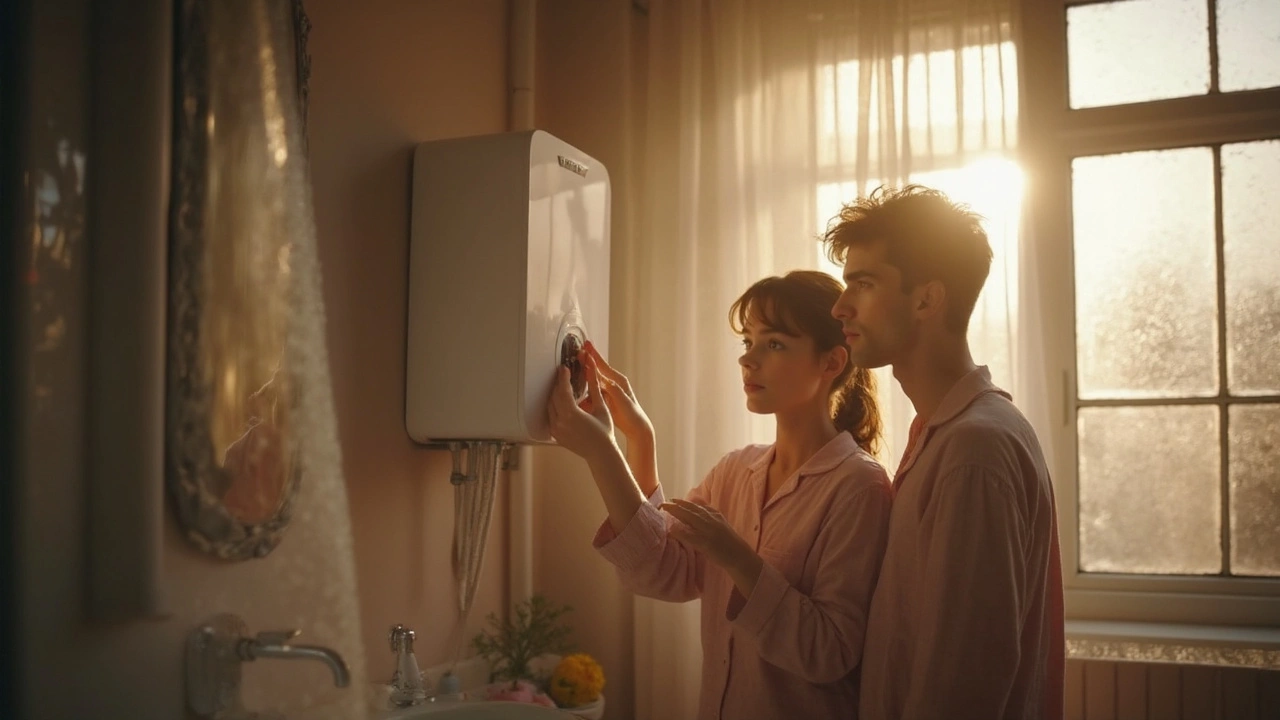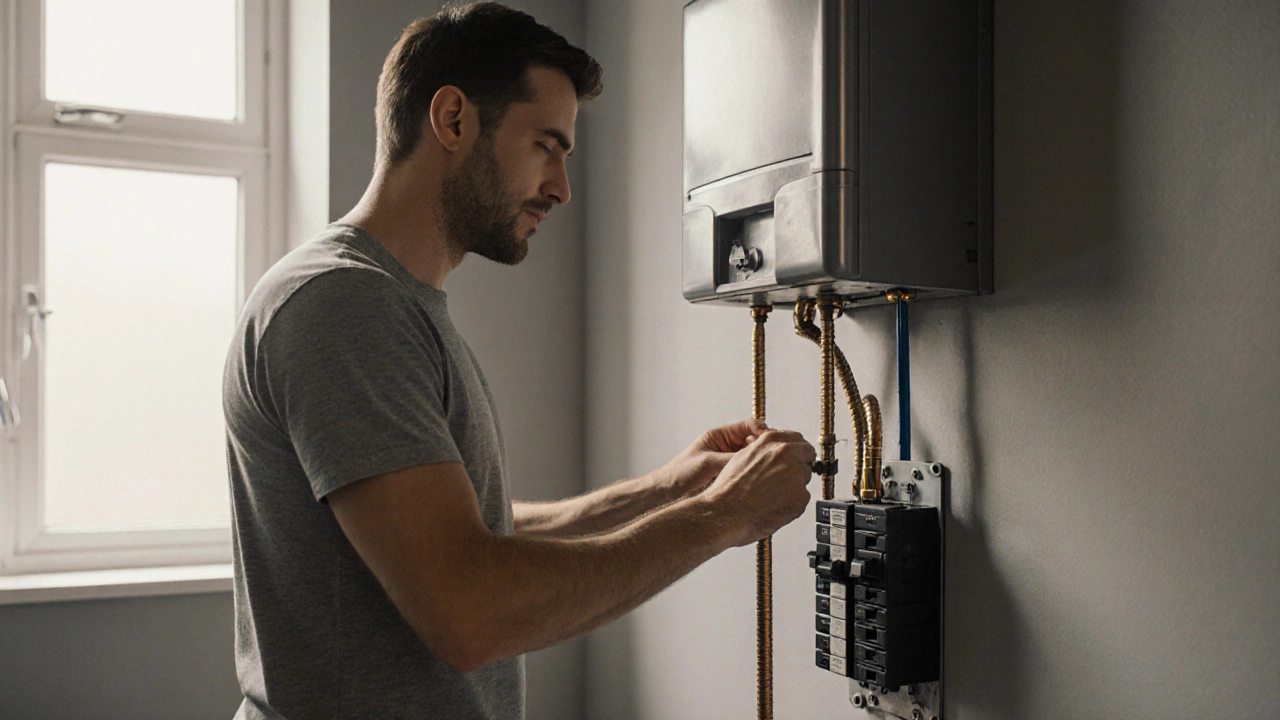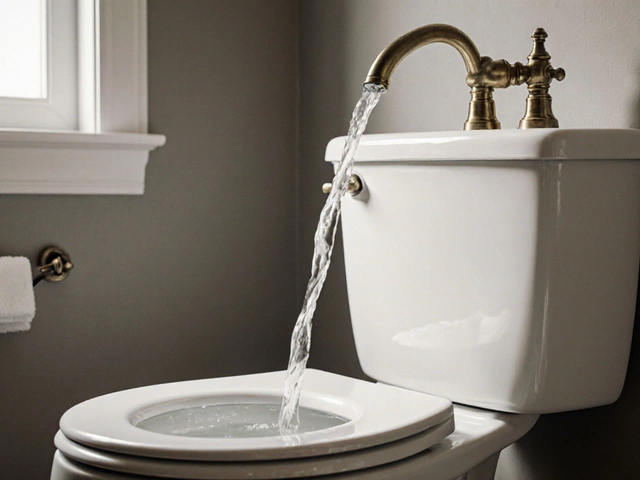If your showers have switched from steamy to straight-up cold, you’re probably wondering what’s going on with your water heater. Let’s get straight to the point: sometimes, the problem’s just a tripped reset button—not a total meltdown.
The reset button on your water heater is like a safety catch. When something’s off (like overheating or an electrical hiccup), it breaks the connection and stops the heater from running. If you’re suddenly out of hot water, this is one of the first things worth checking. Checking it doesn’t require tools, fancy gear, or an engineering degree.
Ever noticed a bright red button on your heater’s thermostat? That’s the reset. If it keeps clicking off or you hear it pop back up often, your heater is telling you something’s wrong. And here’s the fun part: it’s usually simple stuff like a power surge, a faulty thermostat, or even a bit of moisture messing with the wires. Knowing when (and how) to safely reset it can save you time, stress, and even a service fee.
- What Does the Water Heater Reset Button Do?
- Clear Signs Your Water Heater Needs a Reset
- Common Things That Trip the Reset
- How to Safely Reset Your Water Heater
- When to Call a Professional
What Does the Water Heater Reset Button Do?
The water heater reset button is basically a safety switch built into your electric water heater. You'll usually spot it as a small, often red button on the thermostat area or control panel. Its job? To cut off power to the heater before it overheats or causes bigger problems. Think of it as a circuit breaker just for your hot water supply.
Most electric water heaters come with a thermostat that controls water temperature. When everything works like it should, the thermostat signals the heating element to turn on and off as the water cools and heats. But if any part goes out of whack—like if the thermostat sticks or a wire gets loose—the temperature inside the tank can shoot up higher than it's supposed to. That’s where the reset button steps in and kills the power to keep things safe.
Why is this so important? If your water heater didn't have the reset button, overheating could crack the tank, waste energy, or in rare cases start a fire. It even protects you from scalding water—nobody wants a surprise hot water burn in the shower. According to some manufacturers, the cutoff kicks in at around 170-180°F (77-82°C), much higher than the normal set temperature of 120°F (49°C). That’s a built-in backup for when things go really sideways.
In short, the reset makes sure your water heater can’t cook itself—or your plumbing. It’s there to help you avoid bigger headaches, potential repair bills, and a cold shower that starts your day off on the wrong foot.
Clear Signs Your Water Heater Needs a Reset
The first sign most people notice is cold water when you're expecting a hot shower. But there are other, less obvious warnings that your water heater reset button might need attention.
- Sudden loss of hot water: If your taps or shower only give you cold water—especially if it’s happened all of a sudden—your water heater’s safety system might have tripped and cut power to the element.
- No noises from the heater: Usually, you hear a little hum or whoosh when your water heater is working. Complete silence can mean it's powered off after the reset button popped out.
- Visible red button: Most modern heaters have a bright red reset button. If it’s popped out, that’s a dead giveaway the system’s been tripped.
- Breaker issues: If your breaker trips along with the water heater, that’s a sign something’s up with the electrical. Don’t just flip the breaker back—check the heater first!
- Flash of power, then nothing: Sometimes, the water will come out hot for a moment but quickly go cold. That’s often a sign the reset button’s not holding or the heater is overheating again and tripping off.
Here’s an easy way to check if the reset button is the issue:
- Turn off the breaker for the heater (for safety).
- Remove the access panel on your heater (there’s usually one near the top—check your manual).
- If you see the red button, give it a firm press. If it clicks, it was definitely tripped.
- Put the panel back, flip the breaker, and give the tank about 30 minutes to reheat water.
Plenty of folks run into this. According to the U.S. Department of Energy, about 18% of a home’s energy bill goes just to heating water, so anything that interrupts this is worth fixing fast.
| Sign | What It Usually Means |
|---|---|
| No hot water | Heater may have tripped |
| Reset button popped out | Safety switch activated |
| No humming or clicking | No power to element |
| Breaker keeps tripping | Electrical issue or overload |
Spotted any of these signs? Your hot water problems are probably because the reset button needs a press. If you keep resetting it but things go back to cold, that’s your sign to stop and look for the real root cause instead of just hitting the button over and over.
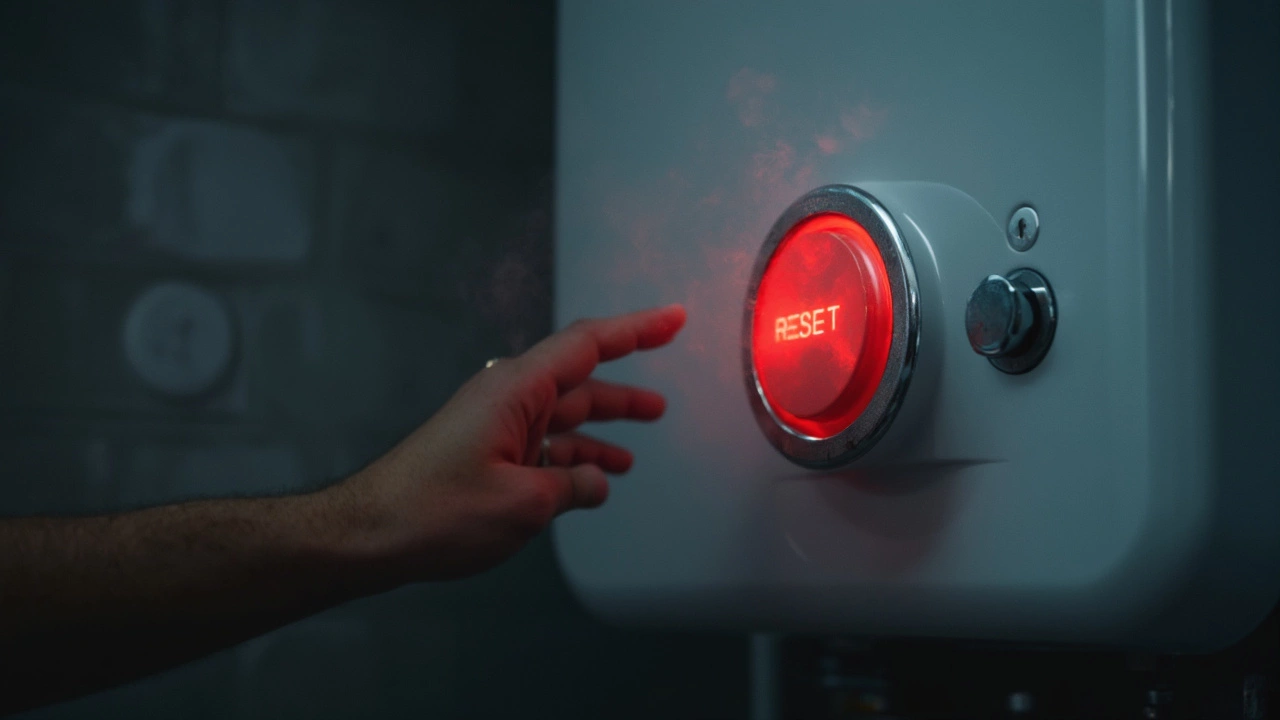
Common Things That Trip the Reset
If your water heater reset button keeps popping, you’re not alone—this happens to tons of folks. The reset’s main job is to shut everything down when something’s unsafe, and there are a few usual suspects that set it off.
Water heater repair pros see a lot of these common issues:
- Faulty Thermostat: When the thermostat gets stuck or reads the wrong temp, it can make your heater run way too hot. Your reset button steps in before things get dangerous.
- Broken Heating Element: Sometimes, the heating element shorts out or breaks down, which sends the system into panic mode and trips the reset.
- Loose or Damaged Wiring: Loose connections or corroded wires can interrupt the electrical flow. Not only can this trip the reset, but it’s a real safety issue you don’t want to ignore.
- Power Surges: Any big spike in electricity—from storms or even just an overloaded circuit—can hit your heater hard and make the reset button pop.
- Moisture or Leaks: If water gets into the electrical bits because of a leak, your reset trips to avoid a possible short circuit. Always check for damp spots or puddles around your tank.
Here’s an interesting fact: In the U.S., about 80% of electric water heaters that won’t stay on have an issue tied to the thermostat or heating element. That means you’re not usually dealing with a complete system failure—just a worn-out part.
If you’re dealing with the reset button a lot, don’t assume you got unlucky. These problems show up after normal wear and tear, especially in heaters over 8 years old or in areas with hard water (this increases heating element failure rates by about 30%).
| Common Cause | Percentage of Cases* |
|---|---|
| Broken Thermostat | 45% |
| Heating Element Failure | 35% |
| Wiring Problems | 10% |
| Power Surge | 7% |
| Moisture/Leaks | 3% |
*Rough averages reported by repair techs
Spotting these root causes early can save you money and prevent cold morning surprises. No guessing—keep an eye out for these issues when your water heater throws you the same cold shoulder over and over.
How to Safely Reset Your Water Heater
First things first: before touching the water heater reset button, make sure you’re staying safe. Always turn off the power to the heater at your home's breaker box. A water heater runs on 240 volts and that's not something you want to mess with while it's live.
Resetting is pretty simple, but you’ve got to do it the right way to avoid any nasty surprises. Just follow these steps:
- Turn Off Power: Find your breaker panel. Flip the switch for the water heater to the "off" position. Test by trying to run some hot water; if the heater hums or clicks, it's still on.
- Access the Reset Button: Locate the access panel on the heater—usually it’s on the side. You might need a screwdriver. Lift the panel and look for insulation or a plastic shield to move out of the way. Underneath, you'll see the thermostat and the red (sometimes black) reset button.
- Press the Button: Firmly press the reset button. You might hear a click. Don’t hold it down forever—a quick press is enough. If it pops right back out, that’s a sign something bigger is wrong and you should NOT keep trying.
- Put Things Back: Return the insulation and panel cover exactly how you found them. This keeps things safe and your warranty intact.
- Restore Power: Head back to the breaker and turn the water heater back on. Give it some time; most heaters take at least 30–60 minutes to reheat the water. Now check if you’ve got hot water running again.
Still have no hot water after the reset? Or if the reset button trips again, don’t keep pushing it. That’s when you stop and consider calling in a pro, because you might have a more serious water heater repair situation like a bad heating element or electrical fault.
If you're the kind who loves data, check out this quick breakdown. Most standard electric water heaters in homes reset fine after one trip, but if the button trips more than twice in a single month, there's usually a bigger problem:
| Reset Attempts | Likely Outcome | Recommended Action |
|---|---|---|
| 1-2 per year | Minor issue, probably fixed after reset | Monitor, no urgent repair |
| 2+ per month | Reset is temporary fix only | Call qualified technician |
Easy, right? Safe steps, a little patience, and a good eye for how many times you’re hitting that button can save you a lot of headache—and keep your hot water problems under control.
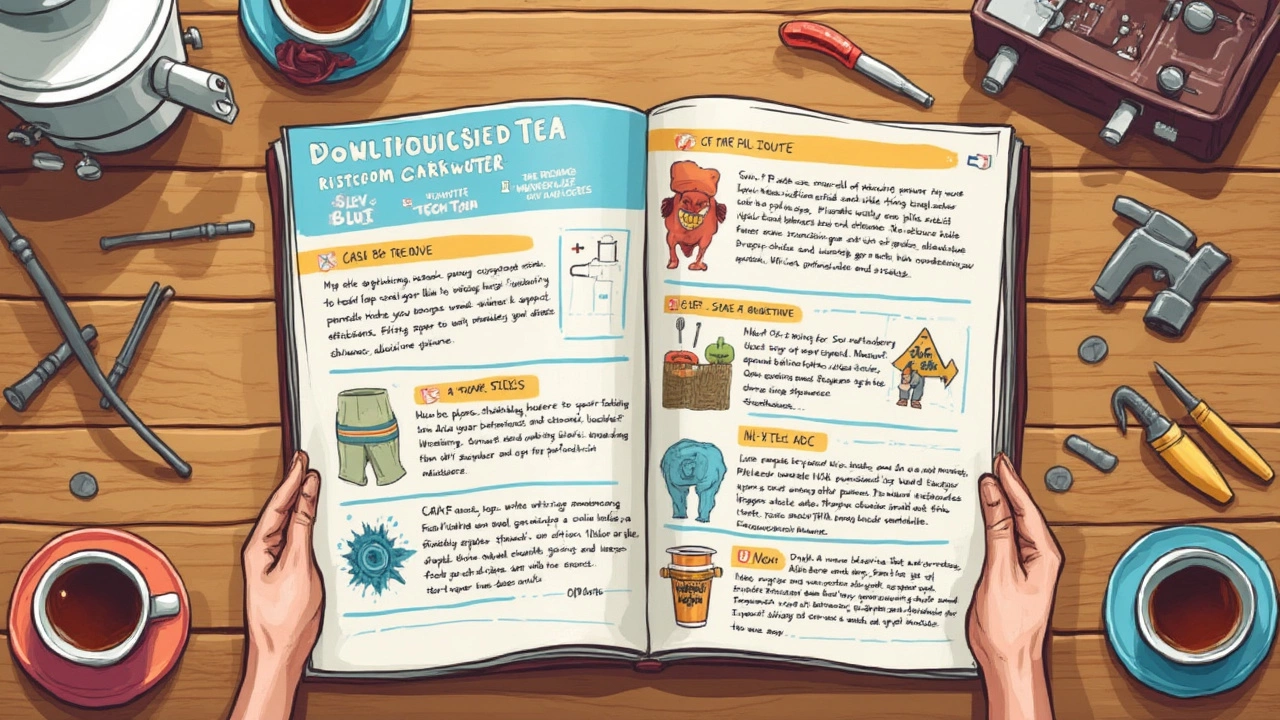
When to Call a Professional
Sometimes hitting the reset button on your water heater isn’t enough. If you’ve tried a quick reset and your water stays cold, it’s probably time to get a pro in your corner. Hot water heaters are serious business—messing with wiring or electrical parts at home can be risky, especially if you're not totally sure what you’re doing. Let's break down when you should stop troubleshooting and call in someone who does this for a living.
- You’ve reset it more than once in a short period. If your water heater reset button keeps tripping, that's a sign there's a bigger issue, like a faulty thermostat or a heating element about to quit on you.
- You see water pooling around the base. That might mean a leak inside the tank. That’s not a DIY fix, and ignoring it can turn your basement into a swimming pool.
- There’s a burnt smell or visible scorch marks. Any sign of burning, melted plastic, or weird odors coming from your water heater? Turn it off. Faulty wiring or overheating is a fire risk—don’t gamble on your safety.
- It’s making loud popping or banging noises. A little noise now and then is normal, but loud or constant banging could mean sediment’s messing up the heating element or even cracking the tank inside.
- The breaker trips every time you try to heat water. A tripping breaker could be an electrical short or a more serious problem with your home's wiring. Best to let an expert check this out.
A pro can quickly spot the problem with specialized tools—like a multimeter for electrical checks or even thermal cameras for heat loss. About 40% of heater breakdowns, according to repair industry data, are due to electrical faults that can’t be safely fixed without training.
| DIY Issue | Call a Pro |
|---|---|
| First reset, no odd noises | Repeated resets, leaks, or electrical smells |
| Easy thermostat check | Breaker trips or no power |
| Basic sediment flush | Tank damage or rusty water |
If you’re ever not sure, don’t risk it. Some repairs are simple, but things like replacing heating elements, rewiring, or fixing leaks aren’t worth the hassle (or danger) if you don’t have experience. When in doubt, search for a good water heater repair tech near you—cold showers are bad, but house fires are worse.
